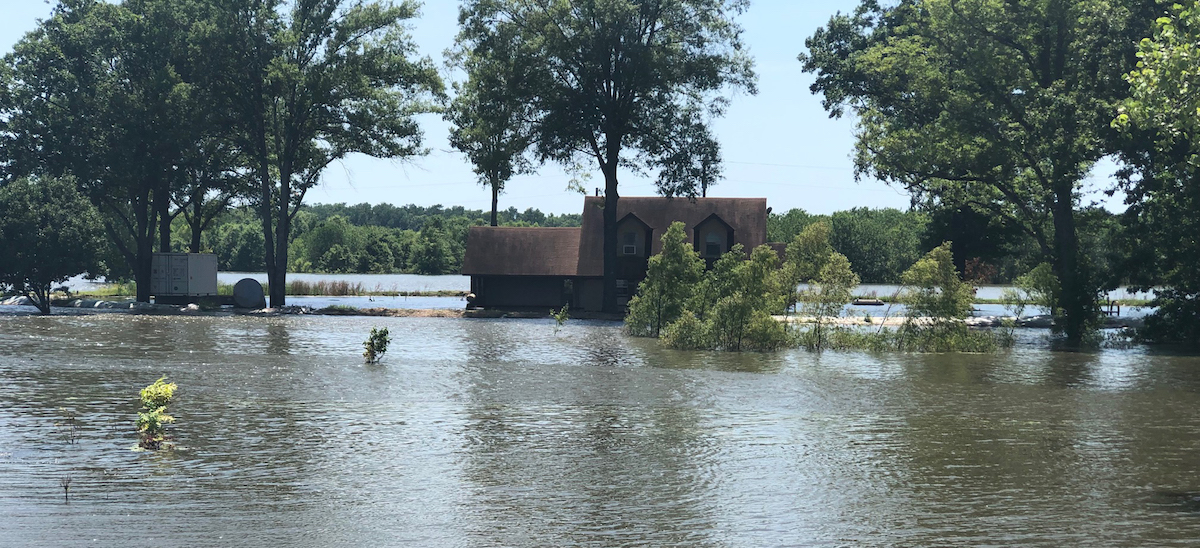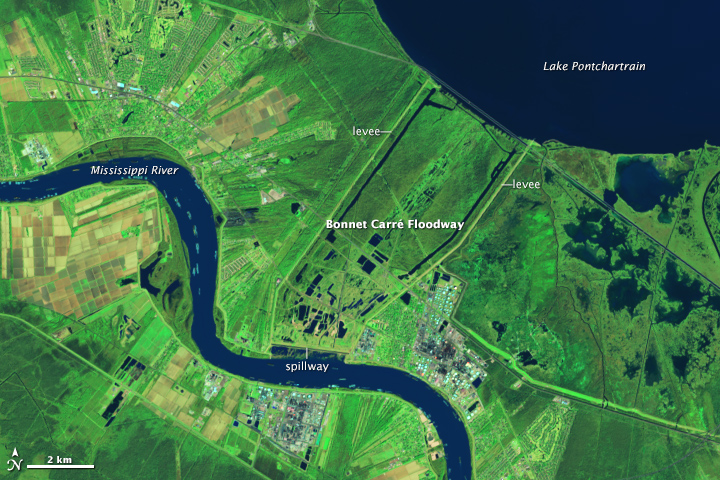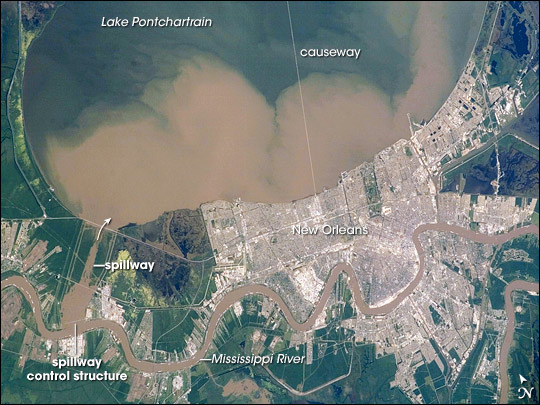More River Flooding Means Less Gulf of Mexico Seafood
By Lydia Cates
After major flooding along the Mississippi River in 1927, Congress tasked the U.S. Army Corps of Engineers with designing a comprehensive plan to limit future flooding and keep the river open for commerce. Nearly a century has passed and there are tension points all along the river, but none greater than disgruntlement regarding the increased frequency of opening the Bonnet Carré Spillway. Lawsuits filed by the State of Mississippi say a comprehensive review is needed in response to flood patterns and climate change.
 Image by Mia Dent
Image by Mia Dent
The logistics of Bonnet Carré are simple, but the ecological impact is profound. The timber, concrete and steel structure is 33 miles upstream from New Orleans and separates the freshwater Mississippi from brackish or saltwater Lake Ponchartrain at a point where the two bodies of water are nearest each other. When river stages are high enough to threaten New Orleans, up to 350 bays or gates in the 5.7-mile dam-like structure can be opened and release up to 250,000 cubic feet per second of river water into the Ponchartrain estuary. Species that can only survive in brackish or saltwater must move – if they can – or die. The surge of freshwater flows from Pontchartrain into the Mississippi Sound, changing the salinity of water there, too.
Quitman Cates is owner of LaFrance Marina Fish Camp/Marina near Bay St. Louis on the Mississippi Gulf Coast. His business depends on saltwater in the Mississippi Sound, and major floodwaters flowing from the Mississippi through Bonnet Carré into Pontchartrain and then to the Sound made 2019 in particular a bad year for business.
“We didn’t have a spring season and hardly a summer season, because we couldn’t catch anything until Aug. 1,” Cates said. “Because our bait business was affected, we also lost some of our campsite residents, which was even more money that we were losing.”
Scientists see the problem more broadly. “Releasing that water through the spillway has caused a lot of other ecological catastrophes, including the destruction of marine life, such as dolphins, turtles and oysters,“ said Dr. Diana Bernstein, climate dynamics expert and assistant research professor at the University of Southern Mississippi.
Former Mississippi Secretary of State Delbert Hosemann initiated legal action against the Corps before leaving office in January 2020. His successor, Michael Watson, released a statement in April regarding the Corps’ decision to again open the Bonnet Carré. Watson also expressed his frustration that the Corps did not seek any input from Mississippi regarding the decision despite the fact that, “The Mississippi Sound is still reeling from the three openings in the past two years.”
Mississippi actually has two lawsuits against the Corps. Both detail the economic and ecological damages caused to the state of Mississippi.
At the outset, projections were that the spillway would only need to be opened once every five years, but the frequency of openings have surpassed that of the plan’s predictions.
Since March 8, 2018, the spillway has been opened four times, including twice in 2019 alone.
“Climate change changes the distribution of water in the hydrological cycle of the Earth, causing more rain and snow upstream on the Mississippi River,” Bernstein said. “That means a lot more flooding for those of us downstream.“
Bernstein said she believes leaders need to pay attention to climate change and devote necessary resources to confronting it because the effects are irreversible and future generations will face difficulties.
Watson said he hopes that the lawsuits against the U.S. Army Corps of Engineers will garner the attention of Congress and force them to reevaluate the situation.
“By getting the Corps to do a comprehensive environmental impact study on the entire Mississippi River system that includes the effects on the Gulf Coast and the Sound, I think the flag will probably be raised high enough that Congress will decide to act,” Watson said.



